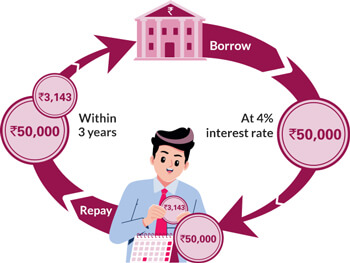Loan Grading Explained: How It Impacts Borrowers and Lenders Alike
Both lenders and borrowers must assess risk in the modern financial environment. This is the point at which loan grading becomes relevant. Financial organizations employ a methodical process called loan grading to determine a borrower’s or loan’s creditworthiness. It assists investors, banks, and credit unions in assessing the probability that a loan will be repaid on schedule and identifying possible hazards before they become more serious.
Gaining insight into the process of loan grading can help you better understand the condition of your loan, your credit score, and the choices lenders make that impact interest rates, approval rates, and other factors. Understanding the fundamentals of loan grading is a wise move, regardless of whether you’re a borrower aiming to enhance your loan profile or a lender attempting to reduce risk.
Click to secure financial risk manager
Loan Grading Explained: How It Impacts Borrowers and Lenders Alike
The systematic assessment of a loan’s quality based on important risk indicators, including the borrower’s credit profile, the stability and value of the collateral, and the probability of principle and interest repayment in full, is known as loan grading. Both individual loans and entire loan portfolios may fall under this risk category. It plays a crucial role in a lender’s larger framework for credit risk and underwriting, frequently being a part of the loan approval and credit assessment procedures.
Finding flaws in outstanding credit exposures is one of the primary goals of a loan review system. Financial institutions can prevent possible losses by taking proactive measures to identify these problems early. Furthermore, loan grading aids in identifying patterns or trends that could influence the portfolio’s overall repayment prospects. Additionally, it is essential for guaranteeing adherence to regulatory regulations and financial reporting standards.
How Loan Grading Works in Lending Operations
A financial institution’s ability to effectively manage its loan exposure is essential to its success. In order to achieve this, banks must use grading systems that evaluate credit risk, which is the possibility of suffering a loss of money as a result of a borrower’s failure to meet their repayment commitments. These technologies help regulatory examiners and internal management make wise credit judgments and keep an eye on the general health of loans.
While there is no standardized technique for grading loans, all federally insured banks are obliged by the Federal Deposit Insurance Corporation (FDIC) to have an effective loan assessment procedure. Larger banks frequently have separate divisions responsible for credit review, but smaller institutions may adopt more streamlined, judgment-based methods.
The design of a bank’s loan grading system is usually influenced by its complexity and structure. To review and monitor loan performance over time, community banks, for instance, might rely on more comprehensive qualitative evaluations, whereas larger financial institutions might employ more data-driven, quantitative methods. Examiners use a number of factors when determining a risk grade, including as the loan agreement, collateral records, and the borrower’s financial standing. Beyond the borrower’s credit score, the study takes into account a number of factors, including cash flow analysis, guarantor support, predicted financial requirements, and repayment consistency.
Expert judgment may be used to grade loans at smaller or less complicated institutions. With this method, a skilled loan officer uses their own discretion and knowledge of the borrower’s situation to assess the loan’s risk rating. Other institutions, on the other hand, might use hybrid methods that incorporate both qualitative and statistical adjustments, or they might use structured scoring models. Banks are free to choose frameworks that best fit their operational requirements and scale because regulatory agencies do not set rigid requirements on the structure of loan grading systems.
In conclusion
More than merely a backroom tactic employed by banks, loan grading has a big impact on how you can obtain credit, how much interest you pay, and how you borrow money in general. Loan grading gives borrowers a path to increase their creditworthiness while assisting lenders in making well-informed judgments by allocating a risk score to loans based on a variety of financial factors.
You’ll be better equipped to keep up good credit practices, lower borrowing rates, and get better loan conditions down the road if you know how your loan is assessed. Understanding how loan grading operates is not only beneficial, but also empowering in a world where financial risk management is the norm.










